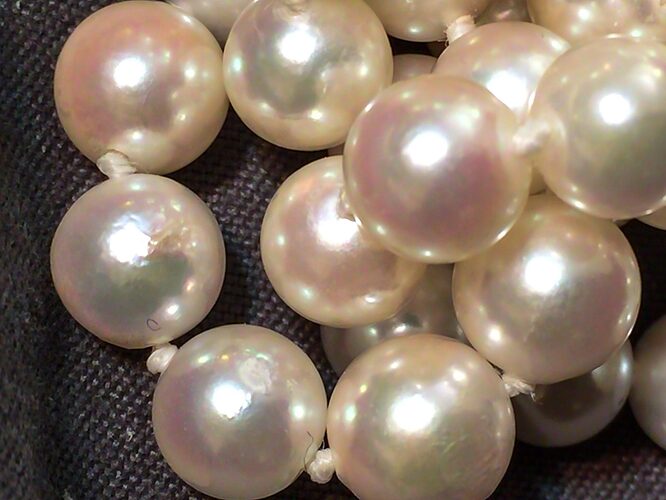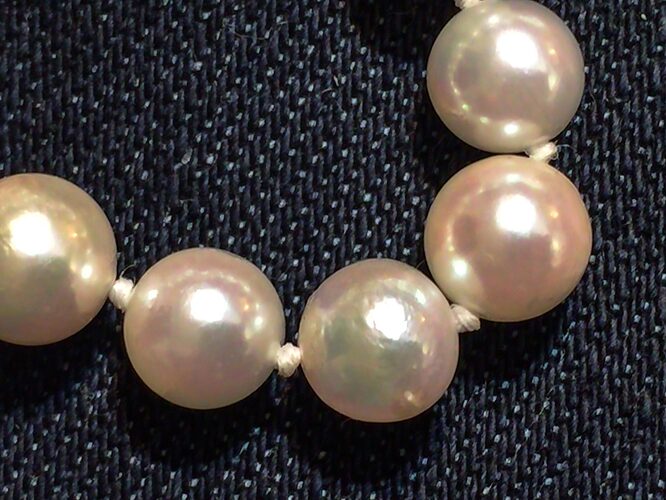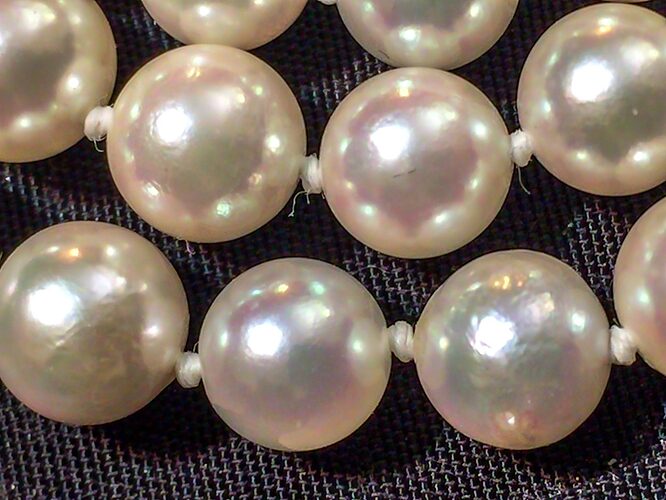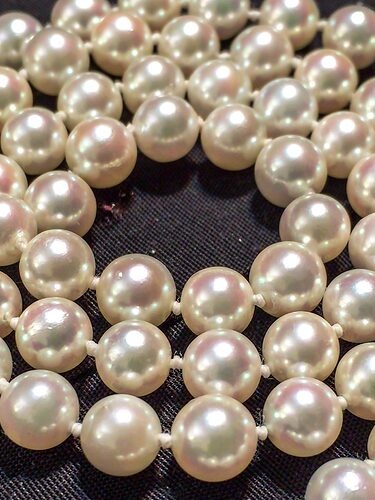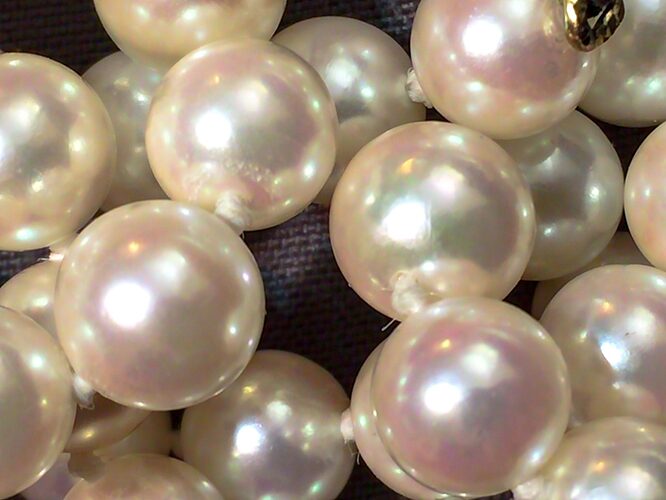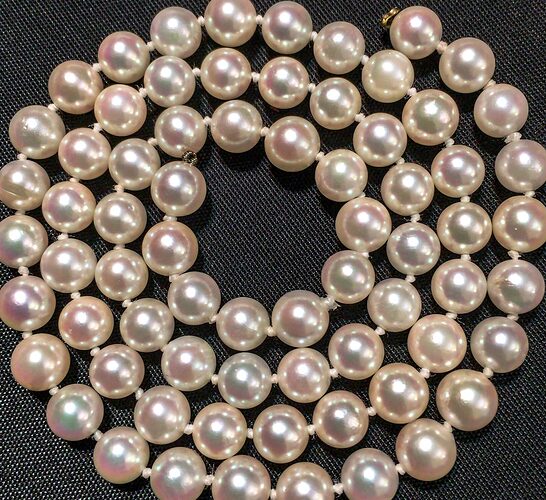Hello,
I know this is something that is extremely hard and next to impossible to decide when it comes to knowing whether or not pearls are naturally grown in the wild, or from a cultured farm. I also know natural pearls are more than rare.
However I have recently come across a particularly gorgeous strand of pearls which do not have a clasp attached to them. I assume it was gold because there is a small gold o ring still attached on one side. This also tells me it did not have a traditional pearl push clasp.
The reason I am sharing this with you today is to simply grab some other opinions about the pearls. I myself do not have an eye for pearls, especially natural ones, because I have simply not been around enough of them to be familiar. This also applies to extremely high grade cultured pearls. Pretty much I don’t know the difference.
I have a few opera length strands of cultured pearls, and they are beautiful but not even comparable to this other strand.
Their colors change depending on the lighting and colors of the objects around them. Their lustre is exquisite in my opinion. I can quite literally see reflections of full objects inside of them. There are surface inclusions which looks like “veins” and “dimples” which I have come to realize help them “play” with light and help create their color changing property. Now, even though they all change colors, they also all have different colors, shapes, sizes and lustre, but yet they match. Not sure if any of this makes sense, for all I know they are painted with some crazy new material that cost a dollar lol.
Observations and Necklace Specifics:
-They are always cold to the touch
-Each hole is drilled at about a .711 of a mm
-No breakage around the holes, however sometimes it seems like there is a white residue, not sure if this is coming from inside the pearl or if it just attracts dust particles.
-The knots are done very well, but not comparable to Mikimoto’s extremely tight knotted technique (I ruled him out due to this characteristic)
-They range from 6-7mm but every single one is a different mm. Some even sit in between measurement points. (I have old school analog micrometer)
-The necklace is a princess length strand.
-Their are 70 pearls all together
I have posted several pictures of them, some in the lower lighting and brighter so you can see their different types of “transformations.” You can see it especially in one photo where I shaded half of the necklace but kept the light on the other half.
If their is anyone out their who has had the privilege of acquiring an eye for pearls, your input is highly appreciated.
If their is anyone out there who has an opinion at all, your input is highly appreciated.
I am looking for any and all input, sky is the limit ![]()
Thank you so much,
Tracy

